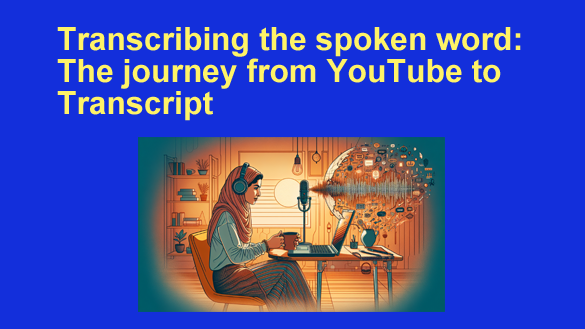 Imagine you stumble across an insightful YouTube video, brimming with information you want to revisit later. You’d wish you could have it all in writing, wouldn’t you?
Imagine you stumble across an insightful YouTube video, brimming with information you want to revisit later. You’d wish you could have it all in writing, wouldn’t you?
Here’s where the magic of transcription gleams through the digital noise.
When you transcribe YouTube video to text, it’s like giving your content a second life, making it accessible, searchable and infinitely more valuable to readers and viewers alike. As our digital experience interweaves with a myriad of multimedia, text versions of auditory content are fast becoming indispensable assets.
Boosting Your Podcast’s Reach Through Transcription
Look around, and you’ll notice podcasts have become as commonplace as blogs once were. And just like written content, they contain a wealth of knowledge that shouldn’t go unnoticed. Transcribing your podcasts can sprinkle a bit of SEO fairy dust on them. Words picked up by search engines lead curious minds right to your audio doorstep.
Beyond boosting discoverability, transcriptions also mean you can spin off your spoken gold into blog posts, social media quotes and beyond – stretching the life of each episode further than you thought possible.
Focusing on podcast accessibility for deaf individuals through transcripts not only broadens your audience but also demonstrates inclusivity. This approach ensures everyone can benefit from the valuable content shared in your episodes.
Enhancing Viewer Experience With Accurate Subtitles
Subtitles are a viewer’s best friend—they bridge the gap when audio is unclear, the surroundings are too noisy, or when speakers use unfamiliar accents. But their powers extend beyond clarity. Accurate subtitles can lock a viewer’s attention, significantly reducing the likelihood of an early click-away.
By fine-tuning your subtitles, you’re not just serving up words; you’re crafting an experience. An experience that viewers reward with loyalty and engagement, highlights worth striving for in every content creator’s journey.
Facilitating Content Accessibility With Effective Subtitling
Behind every informative video lies the potential to educate and inform a broad audience. But without subtitles, segments of viewers, including those with hearing impairments or non-native speakers, might miss out. Subtitling ensures that learning isn’t confined to the limits of sound.
Adhering to best practices for educational content makes sure that your message isn’t just heard, but also seen and understood. Subtitles can shape the learning experience into an inclusive ride for everyone, deepening the impact of your content.
Transcription: The Bridge Between Audio Content and Research Utility
Audio interviews, lectures and historical speeches—these are goldmines for researchers and journalists hungry for authentic sources. Transcription services shine their light here, turning these audio treasures into searchable texts, ready for citation and analysis.
Imagine diving into an archive of interviews, now text-searchable, making it a breeze to find that perfect quote or research reference. Transcription isn’t just a convenience; it’s an academic lifeline that connects the world of spoken knowledge to the thinkers who seek to harness and build upon it.
Breaking Language Barriers in Content Creation With Subtitles
Crossing language boundaries transforms content from local to global. Thanks to subtitles, creators are now international storytellers, reaching audiences miles and languages away.
Crafting multilingual subtitles, however, isn’t without its traps—cultural nuances and idiomatic expressions rarely have direct translations. Nonetheless, the effort to master this art is a nod to inclusivity, allowing creators to whisper, shout, or sing their stories into the hearts of a diverse audience, irrespective of the language they call their own.